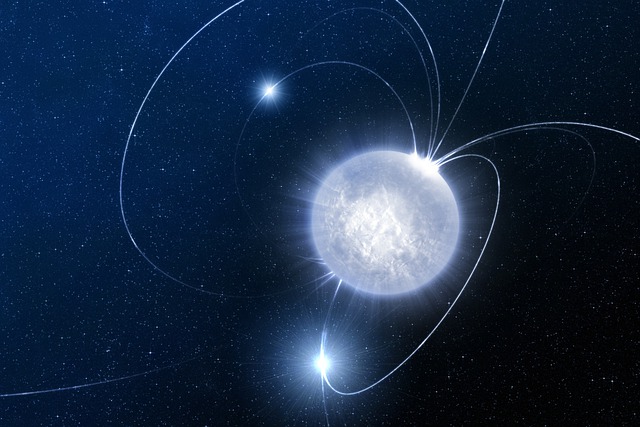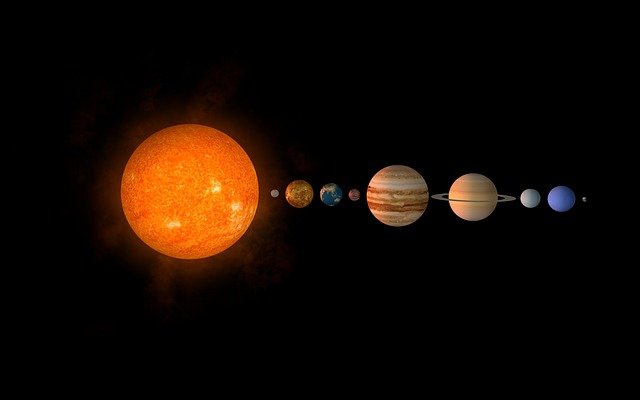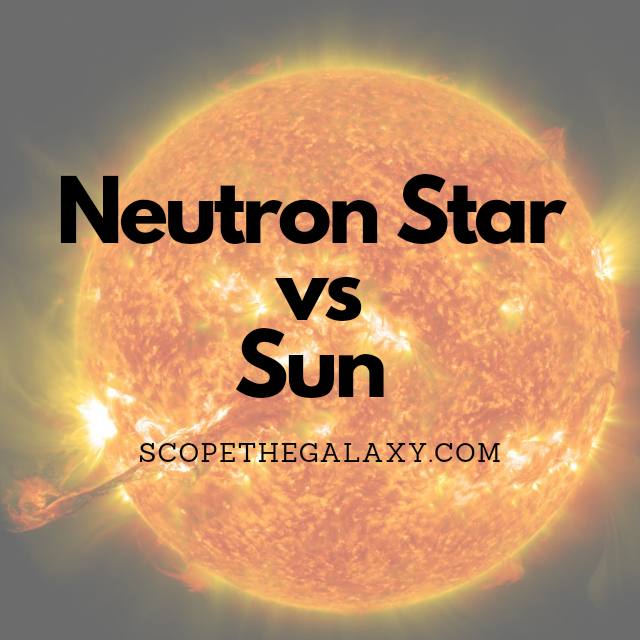*This post may contain affiliate links. This means we may make a commission if you purchase an item using one of our links*
The Sun and neutron stars are stars at different stages in their life. The sun is an active main sequence star going through the motions of nuclear fusion whilst a neutron star is the remnants of a star much bigger than the Sun after a supernova explosion has occurred.
Neutron stars are far dimmer than the Sun, smaller in size yet far denser in regards to mass, and are also able to affect their surroundings more significantly due to the difference in power between their magnetic fields.
Continue reading if you want a more detailed breakdown of what each of these celestial entities are along with the similarities and more so differences between them.
What Is A Neutron Star?
Table of Contents

When a star 10 to 20 times more massive than our sun or more massive than the Chandrasekhar limit of 1.44 solar masses, reaches the end of its life, the core collapses, and the outer matter explodes in a supernova. What remains is known as a neutron star.
Neutron stars can come in two main varieties, acting either as an active pulsating pulsars or the more erratic and powerful magnetars.
The neutron star gets its name from the fact that after the initial explosion of the star, gravity presses the remaining material so tightly that it forces protons and electrons to combine and form neutrons.
If the star’s mass is greater than 20 times our sun’s, this reaction is likely to create a black hole. While black holes are almost impossible to observe, neutron stars are straightforward, thanks to pulsating light.
A neutron takes a mass greater than twice the sun’s mass and condenses it into a spherical object no bigger than one of Earth’s cities. These mysterious objects are still not entirely understood by scientists.
The atmosphere of a neutron star comprises hydrogen, helium, and carbon. The outer crust contains ions and electrons, while the inner crust contains ions and superfluid neutrons. The outer core is superconducting protons, but what exactly comprises the inner core? That fact remains unknown.
The gravity of these objects is so strong that it bends its light waves around its body, making it easier for scientists to determine the size and mass of these stars.
What Is The Sun?

The Sun is the bright, celestial entity at the center of our solar system and is also a star that falls under the G type main sequence star bracket (also called a yellow dwarfs). These would all be medium sized stars that tend to be around 0.84 – 1.15 solar masses in size.
Our Sun is 1 solar mass in size, making it a medium sized medium star. It’s also on the brighter side for a yellow dwarf, which is why it’s white as opposed to the slightly yellow color that less luminous yellow dwarfs would be.
Even if that is the case we still see the Sun as yellow or even red on Earth.
The reason for this significant color shift is as a result of our atmosphere scattering and breaking up the photons that reach us, ultimately changing the true color of the light rays from white to the yellow, orange, or the red we often see it as.
As it is a star, the Sun will actively convert the hydrogen particles at its core into helium, through a process called nuclear fusion. Nuclear fusion is what generates the light and the energy we receive, helping us power machinery, technology, grow crops so on and so forth.
The process of nuclear fusion also affects how hot our star burns, allowing it to reach temperatures of 6000°C on a day to day basis. In fact, this is said to be the case for another 4.5 – 5 billion years until it’s unable to convert hydrogen into helium.
Once hydrogen cannot be converted, an imbalance between the inward and outward forces will occur causing an imbalance that would result in our Sun bloating up many many times its current size, inadvertently entering its red giant phase, becoming 256 times larger than it is now.
This phase will last for around a billion a year until it sheds its mass through a process called a planetary nebula, leaving behind a dead white dwarf remnant.
Is The Sun Considered A Neutron Star?
No, the Sun is not considered a neutron star, this is because our sun is an active and functional yellow dwarf whilst neutron stars are the dead remnants of a supernova explosion, typically those between 1.44 – 20 solar masses on the upper end.
Even after death, our sun will not become a neutron star instead, its stellar remnant will be a white dwarf as it does not have sufficient mass to become the dense, spacetime bending ball of neutrons that is being discussed throughout this article.
Similarities Between A Neutron Star And The Sun
Both are related in the sense that they can and could produce their own light through nuclear fusion. Of course, neutron stars are unable to do so now but, it was the case initially.
Other than that, both entities are very different from one another.
Differences Between A Neutron Star And The Sun
The differences between neutron stars and our sun include the following:
- Neutrons stars have more mass than the Sun, where they are typically 1.4 solar masses on average but can reach 3.2 solar masses on the upper end (which would be rare) whilst the sun is only 1 solar mass
- The sun is far bigger than your average neutron star where neutron stars are between 15 – 25km and the sun is just under 1.4 million km in diameter.
- Neutron stars are extremely dense that they can affect space and time in a similar manner to that of a black hole.
- Neutron stars have a magnetic field that is much stronger than the sun where its magnetic field is 2 times stronger than Earth. Neutron stars are around half a trillion to half a quadrillion times more powerful (magnetars in particular) than the Sun in this aspect.
- A neutron star’s gravity can dilate time by around 30% whilst the Sun cannot
- Neutron stars can affect light where it’s possible to see both the front and back of these celestial objects at one time whereas the Sun is unable to do this.
- The sun spins around its axis once every 27 days whilst neutron stars spin anywhere from 20+ per second to once every 10 seconds.
- The Sun is around 6000°C in temperature whilst neutron stars are scorching hot at 1,000,000+°C.
- Neutron stars are the remnants of a supernova explosion whilst the Sun is still an active yellow dwarf.
- Neutron stars are less luminous than our Sun, mostly due to their size.
Summary
As stated above, the Sun and neutron stars are very different entities from each other, from their density, temperature, rotation rate, weight, size, luminosity, and so on.
Ultimately, neutron stars and the Sun don’t fall under the same star bracket, and this is mostly down to the fact both are in the different phases of a star lifecycle, one that’s still active and another that is technically a dead star.

